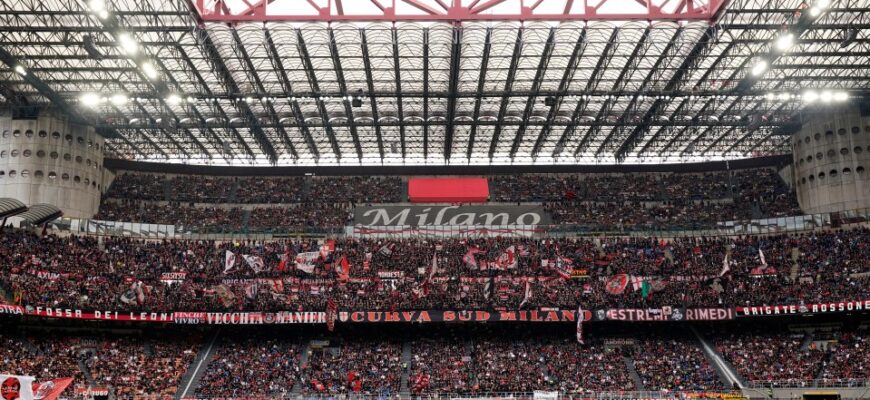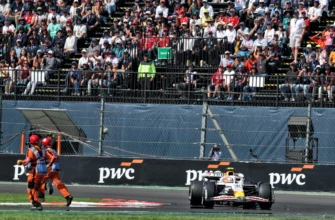The hallowed grounds of San Siro, a stadium synonymous with footballing glory and fierce Milanese rivalries, stand on the precipice of a monumental transformation. As the echoes of past triumphs fade, a new vision for Inter and AC Milan`s home turf is beginning to take shape, promising a state-of-the-art facility designed for the modern era. While nostalgia for the iconic *Meazza* is palpable, the pragmatic march of progress dictates a future focused on unparalleled fan experience, economic vitality, and global competitiveness.
A Modern Colossus for Milanese Giants
For decades, European football has witnessed a trend: clubs building their own, cutting-edge stadiums to boost revenue, enhance fan engagement, and provide facilities befitting 21st-century sport. Italy, perhaps notoriously slow on this front since Juventus`s stadium opened in 2011, is finally catching up. The proposed new arena for Inter and AC Milan, though still in its nascent design phase by architectural titans Foster + Partners and Manica, offers intriguing glimpses into what lies ahead.
Capacity and Seating: A Nod to Tradition, a Leap in Comfort
One of the initial points of contention, the stadium`s capacity, appears to have found a pragmatic resolution. While earlier discussions flirted with a reduced capacity of 60,000, the latest plans confirm a design for **71,500 spectators**. This figure is remarkably close to the current San Siro, ensuring that the electric atmosphere of major Milanese derbies and European nights will lose little of its grandeur. However, the structure itself will be radically different: a streamlined **two-tier design** will replace the *Meazza`s* three, aiming for better sightlines and a more intimate fan experience, without the “nosebleed” seats of the past.
Architectural Evolution: Oval Form and Vanishing Beams
Prepare for a visual departure. The new stadium is envisioned with a distinctly **ovalized form**, a stark contrast to the *Meazza`s* signature rectangularity. Perhaps most symbolically, the iconic **red beams** that define San Siro`s current silhouette are set to vanish. This isn`t merely an aesthetic choice; it signifies a break from the past, embracing a contemporary architectural language that prioritizes functionality, energy efficiency, and modern design principles. Early illustrations, while *purely indicative*, suggest a sleek, futuristic edifice that could become a new landmark for Milan.
“The great red beams of the Meazza will be gone. An architectural statement, perhaps, but one that certainly streamlines the cleaning process – no more nooks and crannies for pigeon parties.”
Beyond the Pitch: An Integrated Entertainment Hub
Modern stadiums are no longer just venues for sport; they are economic engines and community hubs. The new Milan stadium project fully embraces this philosophy, integrating a comprehensive array of facilities:
- **Fixed Roof:** Unlike the retractable roof trends seen elsewhere, this stadium will feature a fixed roof, likely designed for optimal weather protection and acoustic performance, though not necessarily covering the entire pitch.
- **Enhanced Accessibility:** A crucial upgrade, all sectors will include dedicated spaces for disabled spectators, a significant improvement from the current San Siro`s limitations.
- **Dynamic Commercial Zones:** Expect expansive **hospitality areas**, catering to corporate clients and premium ticket holders, alongside classic international stadium corridors brimming with **restaurants and retail shops**. The aim is to transform match days into full-day events.
- **Integrated Urban Development:** The stadium will sit atop a grand podium, creating a vibrant plaza where club museums and stores can thrive. The surrounding area is slated for significant development:
- **43,000 sqm** of office space.
- **20,000 sqm** for hotels.
- **15,000 sqm** dedicated to parking solutions.
- **Green Spaces:** In a commitment to urban planning and environmental responsibility, **50% of the area will remain non-cemented**, with at least **80,000 square meters of green space** eventually returning to municipal ownership.
The Legacy Question: What Becomes of the Old San Siro?
The fate of the legendary *Giuseppe Meazza* stadium remains a poignant subject. While the complete demolition of the structure is a strong possibility, plans suggest a portion of the old stadium could be repurposed. This remnant might house commercial and entertainment areas, perhaps even a dedicated museum celebrating San Siro`s rich history. It`s a delicate balancing act between honoring a storied past and forging a commercially viable future, a challenge as complex as any tactical decision on the pitch.
Milan`s Future: Designed by the Best
With names like Norman Foster and David Manica at the helm, the project benefits from world-class architectural expertise. This collaboration is akin to having footballing legends Pirlo and Suarez orchestrating plays – promising innovation, elegance, and efficiency. However, as with any grand design, the devil is in the details, and specific elements are subject to change as the project matures.
The transition from the old San Siro to its modern successor represents more than just a change of venue; it`s a strategic move to secure the financial health and global standing of two of football`s most illustrious clubs. While the soul of San Siro may linger in memory, its spirit is set to be reborn in an arena fit for a new generation of champions.








